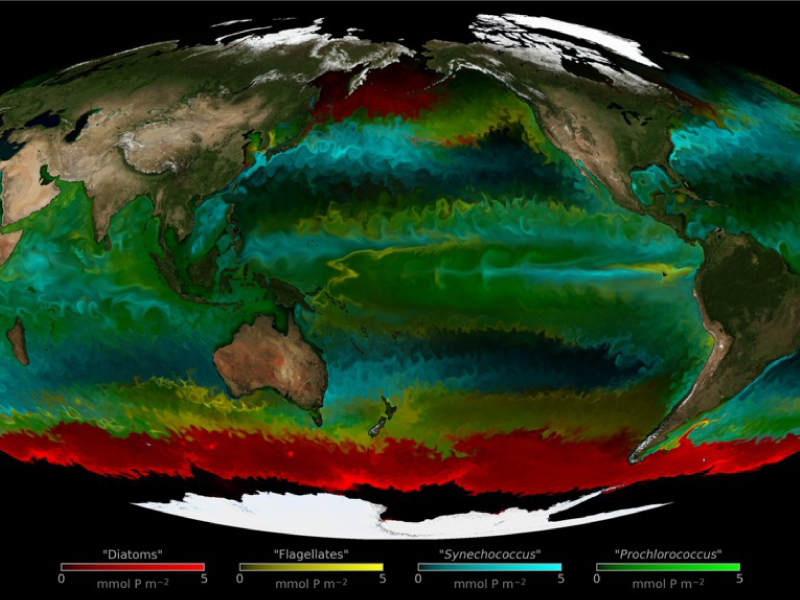Gallery
A multi-year model shows the distribution of four types of phytoplankton. Credit: MIT Darwin Project, ECCO2, MITgcm (MP4, 29.4 MB).
A multi-year model shows the distribution of four types of phytoplankton. Credit: MIT Darwin Project, ECCO2, MITgcm (MP4, 29.4 MB).
Modeled Phytoplankton Communities (Mollweide Projection)
[30-Sep-2015] Phytoplankton are the base of the marine food web and are crucial players in the Earth's carbon cycle. They are also incredibly diverse. This visualization shows dominant phytoplankton types from 1994-1998 generated by the Darwin Project using a high-resolution ocean and ecosystem model. The model contains flow fields from 1994-1998 (generated by the ECCO2 model), inorganic nutrients, 78 species of phytoplankton, zooplankton, as well as particulate and dissolved organic matter. Colors represent the most dominant type of phytoplankton at a given location based on their size and ability to uptake nutrients. Red represents diatoms (big phytoplankton, which need silica), yellow represents flagellates (other big phytoplankton), green represents prochlorococcus (small phytoplankton that cannot use nitrate), and cyan represents synechococcus (other small phytoplankton). Opacity indicates concentration of the carbon biomass. A key part of the Darwin Project is developing theoretical and numerical models of the marine ecosystems. The data shown here are from a simulation of the Darwin model in a physical run of the Massachusetts Institute of Technology general circulation model by the Estimating the Circulation and Climate of the Ocean (ECCO) group. The model provides a laboratory to explore the controls on biodiversity and the biogeography of different phytoplankton species. In particular, the role of the swirls and filaments (mesoscale features) appear important in maintaining high biodiversity in the ocean.Original Media » Click on the image to play the movie. Click on the Escape key or anywhere outside the shadowbox to close.
To download a copy, right click on the image and select Download Linked File (on a Mac keyboard, click the touchpad while holding down the Control key).


